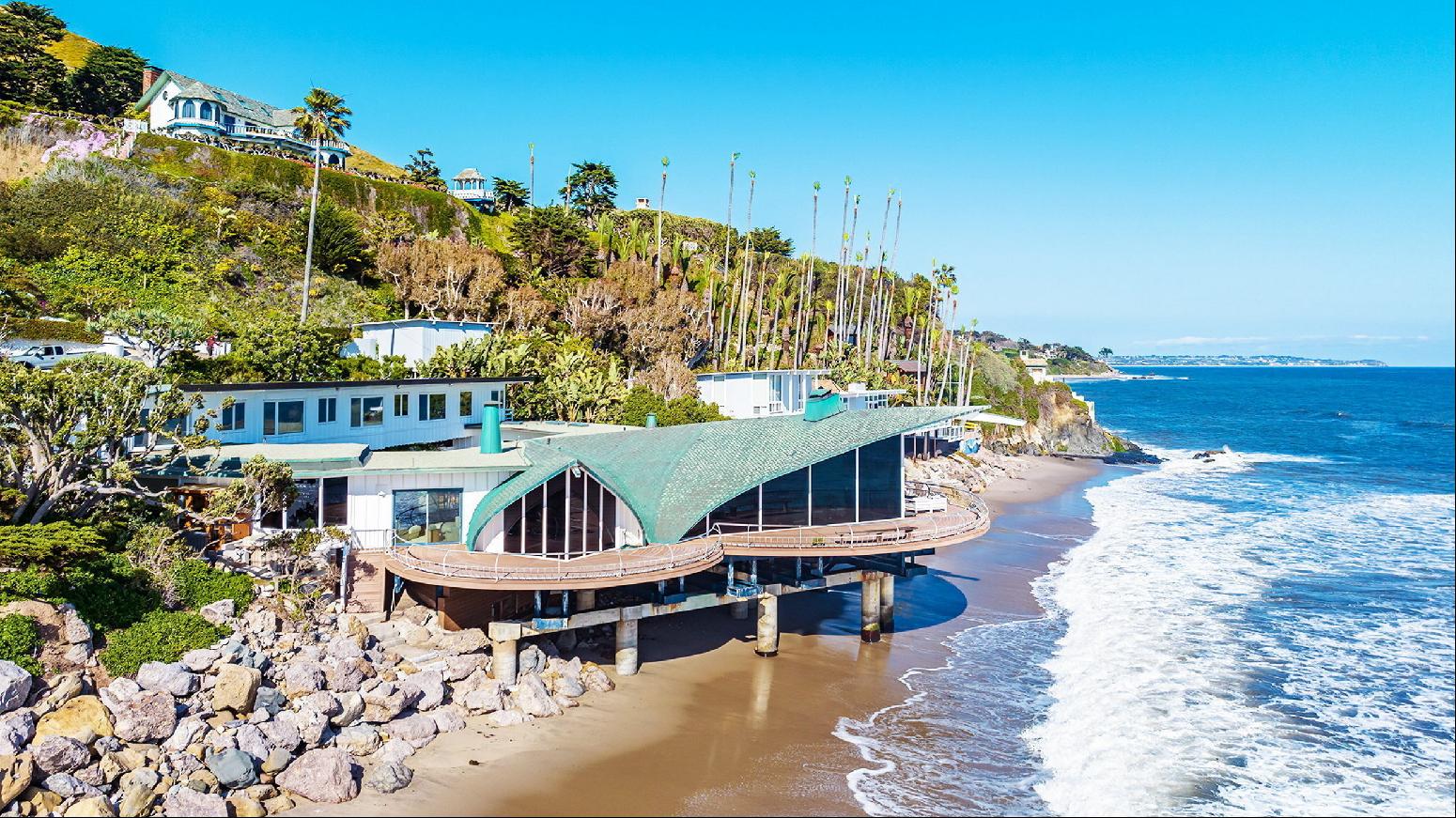
By Edwin Heathcote
Harry Gesner, with his surfing obsession and leading-man looks, defied the traditional image of an architect. Unsurprisingly, Gesner was not technically an architect, but this unconventional background may have contributed to his status as one of mid-century California’s most unique and radical architectural designers. While his peers focused on glass boxes and minimal villas, Gesner crafted futuristic forms, wacky shapes, and sci-fi fantasias.
The Wave House, currently listed for $42.5mn, exemplifies his exceptional design skills. According to Gesner, he conceptualized the house while observing the site from his surfboard in the Pacific, sketching its profile in wax pencil on his board. The house’s organic, wave-like roof, adorned with patinated copper tiles resembling fish scales, foreshadowed iconic structures like the Sydney Opera House and Frank Gehry’s daring works.
Born in 1925, Gesner’s early life seems like a story straight out of a movie. He learned to fly a plane at 14 and served as an army ski instructor in his youth. He even participated in the D-Day landings of 1944, surviving Omaha Beach due in part to his surfing experience. Despite being noticed by Frank Lloyd Wright, Gesner declined the opportunity to study with him and instead embarked on an expedition to Ecuador, eventually returning to California to work in his uncle’s construction firm and hone his craft.

Gesner’s breakout project was the remarkable Eagle’s Watch house he designed in Malibu in 1957, now available for rent on Airbnb. Situated on a challenging sloping site accessible only by a funicular, the house’s extravagant form was inspired by the wings of an eagle Gesner observed flying above the location. Its swooping rooflines garnered extensive publicity, solidifying California’s reputation for unconventional architecture.
The Wave House was designed around the same time but took longer to complete. Elevated on concrete stilts above the beach, the house projects itself towards the ocean like a ship’s prow. The roof, reminiscent of Jørn Utzon’s Sydney Opera House and Eero Saarinen’s TWA terminal at JFK airport, is constructed with complex timber elements that give it a deceivingly simple appearance.

Behind the extravagant beachfront structure lies a more conventional accommodation block, preserving the purity and sculptural effect of the ocean-facing element. The spacious decks offer breathtaking views of the ocean, arranged in a cloverleaf plan.
Unlike in the original designs, handrails were added at the request of Rod Stewart, a former owner of the house in the 1970s, who expressed concerns about party guests falling onto the beach.
Gesner cultivated a clientele of playboys drawn to his unconventional yet undeniably sexy designs. He counted Marlon Brando among his friends and attempted to design a house for the actor, but Brando’s short attention span proved challenging.
Although renowned, Gesner remained an outsider in the architecture field. He was, however, a trailblazer and early advocate of environmentalism. In the 1990s, he converted his petrol-powered 1959 Mercedes to electric and patented a system for transforming solid waste into fuel.
The Wave House is a magnificent architectural gem available for passionate buyers. For those unable to afford it, Gesner’s adjacent home, the Sandcastle (1974), is currently available for the more accessible price of $22.5mn.
Photography: Simon Berlyn
Denial of responsibility! Vigour Times is an automatic aggregator of Global media. In each content, the hyperlink to the primary source is specified. All trademarks belong to their rightful owners, and all materials to their authors. For any complaint, please reach us at – [email protected]. We will take necessary action within 24 hours.

